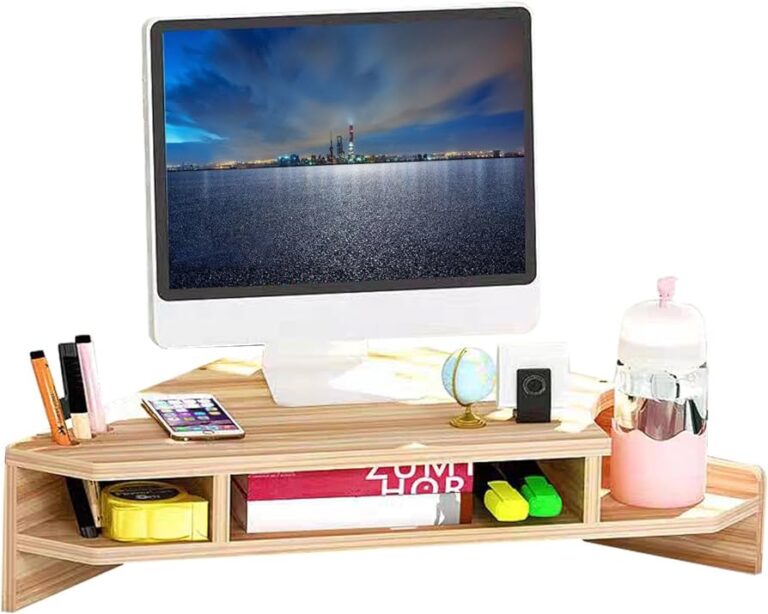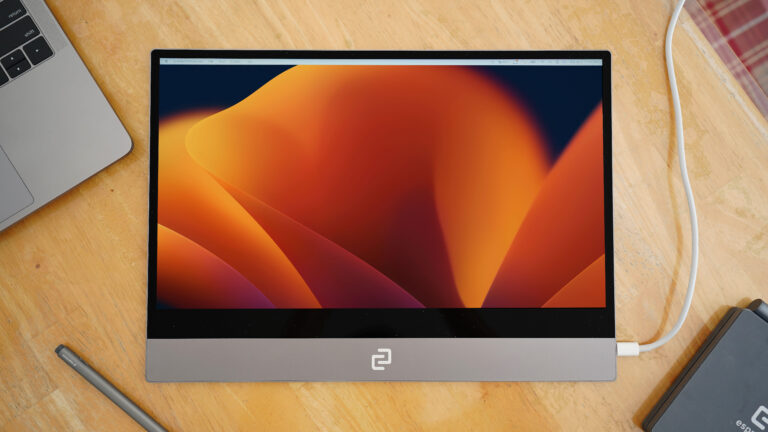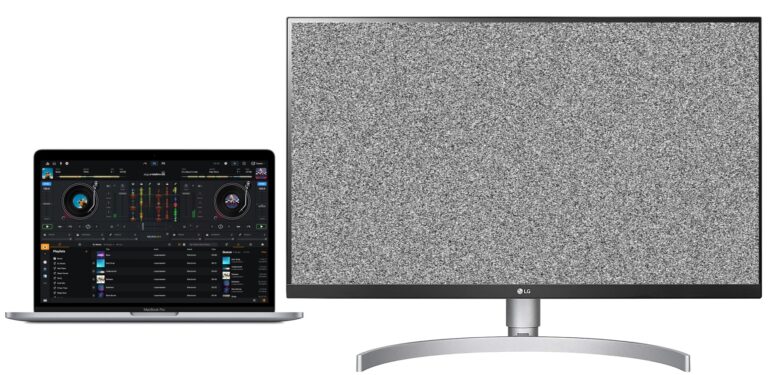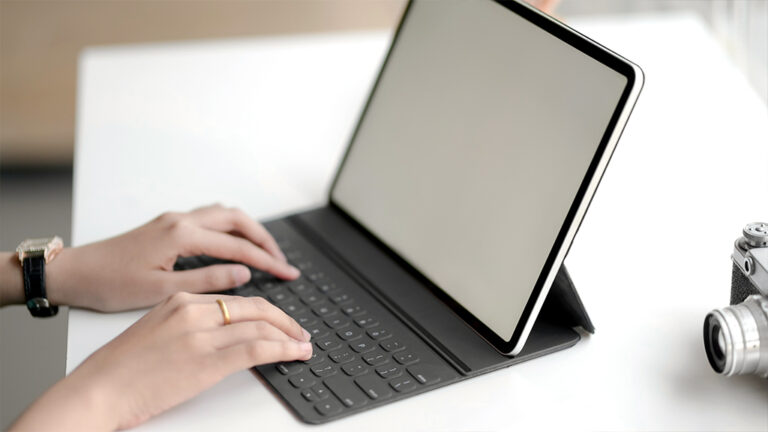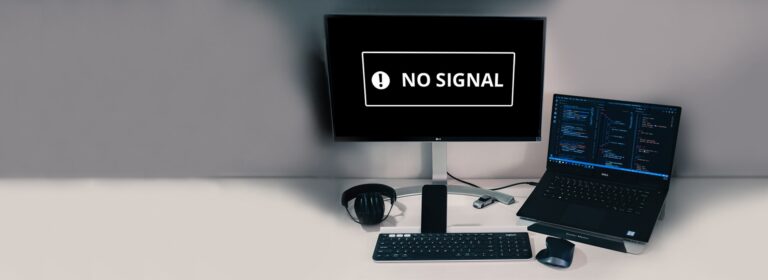Why is My Monitor Not Connecting to My PC? Troubleshooting Tips and Solutions
If your monitor is not connecting to your PC, the most common cause is a loose cable. First, reattach the cable running from your monitor to your PC.
If the problem persists, check for visible damage on the cable and consider replacing it. Having trouble connecting your monitor to your PC can be frustrating. It can hinder your productivity and prevent you from accessing important information. In most cases, the issue can be resolved by addressing a loose cable connection.
This article will delve into the common reasons behind your monitor not connecting to your PC, provide simple troubleshooting steps, and offer solutions to help you fix the problem and get your monitor up and running smoothly again. Don’t let a simple cable issue halt your work; read on to learn how to resolve the problem and restore your monitor’s functionality.
Signs Your Monitor Isn’t Connecting
If your monitor isn’t connecting to your PC, the culprit could be a loose cable. Try reattaching the cable firmly, and if the issue persists, check for visible damage on the cable. It’s also worth considering glitchy software updates or malfunctioning drivers as potential causes.
“no Signal” Message
One of the most common signs that your monitor isn’t connecting to your PC is seeing a “No Signal” message on your screen. This message indicates that your monitor is not receiving any input from your computer. It can be frustrating to see this message, but there are a few potential causes and solutions to explore.
Black Screen Despite Power
Another sign that your monitor isn’t connecting is when you have a black screen despite your monitor receiving power. This can happen even when your monitor is turned on and appears to be functioning normally. There are several possible reasons for this issue, such as cable connection problems, software glitches, or faulty hardware.
Loose Cable
A loose cable is a common culprit behind a monitor not connecting to a PC. To fix this issue, start by reattaching the cable running from your monitor to your PC. Ensure that it is firmly connected at both ends. If the monitor is still not displaying a signal, inspect the cable for any visible damage. If you find any damage, consider replacing the cable with a new one.
Software Or Driver Issues
Sometimes, a glitchy software update or a malfunctioning driver can cause your monitor to not connect properly. To resolve this, try restarting your computer and updating your graphics driver to the latest version. You can usually find and download the latest driver from the manufacturer’s website. Additionally, check for any pending software updates and install them.
Power And Connection Problems
Another common cause for a monitor not connecting is power and connection issues. Make sure that your monitor is properly plugged in and that the power outlet is functioning correctly. Also, check if the monitor’s power indicator light is on. If it’s not, try connecting the monitor to a different power outlet or using a different power cable.
Hardware Problems
In some cases, hardware issues can prevent your monitor from connecting to your PC. Check if your RAM sticks are faulty, dirty, or oxidized, as this can cause display problems. Additionally, ensure that all internal components in your PC, such as the graphics card, are properly seated and functioning correctly. If you suspect a faulty component, consider seeking assistance from a professional technician.
When your monitor isn’t connecting to your PC, it can be frustrating, but there are several potential causes and solutions to explore. By checking for loose cables, resolving software or driver issues, ensuring power and connection stability, and diagnosing any hardware problems, you can hopefully get your monitor connected and working properly again.
Confirming Basic Connection Integrity
If your monitor is not connecting to your PC, the most common cause is a loose cable. Make sure to reattach the cable firmly and check for any visible damage. If the issue persists, it could be related to a glitchy software update, an unplugged cable, or a malfunctioning driver.
Inspecting And Securing Cable Connections
To confirm the basic connection integrity between your monitor and PC, start by inspecting and securing the cable connections. A loose or damaged cable can often be the culprit behind your monitor not connecting to your PC. Follow these steps to ensure the cable connections are intact:- First, turn off your PC and monitor to avoid any potential electrical hazards.
- Locate the cable running from your monitor to your PC. It is usually a VGA, HDMI, or DisplayPort cable.
- Gently detach the cable from both your monitor and PC.
- Inspect the cable for any visible damage, such as frayed wires or bent pins. If you notice any damage, it is recommended to replace the cable.
- Clean the cable connectors and ports using compressed air or a soft, lint-free cloth to remove any dirt or debris that may hinder the connection.
- Reattach the cable firmly into the appropriate ports on both your monitor and PC. Ensure that the connectors are securely inserted and tightened.
- Turn on your PC and monitor to see if the issue persists. If the monitor still fails to display a signal, proceed to the next troubleshooting step.
Checking Power To Monitor And Pc
In addition to inspecting the cable connections, it is crucial to check the power supply to both your monitor and PC. Follow these steps to ensure the power is properly connected:- Ensure that both your monitor and PC are properly plugged into power outlets that are functioning correctly.
- Check if the power cords are securely connected to the respective devices.
- If you are using a power strip or surge protector, try plugging the monitor and PC directly into a wall outlet to rule out any potential issues with the power strip.
- Verify that the monitor’s power button is turned on. Some monitors have separate power buttons located on the front or side of the device.
- Press the power button on your PC to ensure it is turned on and receiving power.
- If you are using a laptop, make sure it is not in sleep mode or hibernation. Press the power button to wake it up.
- Once you have confirmed that both the monitor and PC are receiving power, check if the issue is resolved. If not, move on to further troubleshooting steps.
Common Culprits And Quick Fixes
The Common Culprits and Quick Fixes section aims to address the frequently encountered issues that may cause a monitor not to connect to a PC. Here, we will discuss potential cable malfunctions, graphics card and driver verification, and adjusting display settings on your PC.
Potential Cable Malfunctions
One of the most common causes of a monitor not connecting to a PC is a loose or faulty cable connection. If your monitor is displaying no signal, it is essential to ensure that the cable running from your monitor to your PC is securely attached. Simple reattachment of the cable might resolve the issue.
Graphics Card And Driver Verification
Another potential cause for a monitor not connecting to a PC is related to the graphics card or its drivers. It is advisable to verify that your graphics card is functioning correctly and that the appropriate drivers are installed. Outdated or corrupt drivers can often lead to display issues. Ensure that you have the latest drivers from the manufacturer’s website and consider reinstalling them if necessary.
Adjusting Display Settings On Pc
In some cases, the problem lies within the display settings on your PC. Incorrect or incompatible display settings can prevent your monitor from connecting properly. To fix this, access your display settings and make sure they are configured correctly. Set the correct resolution, refresh rate, and display mode to ensure compatibility with your monitor.
In conclusion, a loose cable connection, graphics card or driver issues, and incorrect display settings can commonly result in a monitor not connecting to a PC. By addressing these factors one by one, you can easily troubleshoot and resolve the issue. Remember to secure the cable connection, verify and update your graphics card drivers, and adjust display settings to ensure seamless connectivity between your monitor and PC.
Advanced Troubleshooting Steps
If your monitor is not connecting to your PC, the most common cause may be a loose cable. Make sure to reattach the cable firmly and check for any visible damage. If the issue persists, it could be due to a glitchy software update, unplugged cable, or malfunctioning driver.
When you encounter the frustrating issue of your monitor not connecting to your PC, there are some advanced troubleshooting steps you can take to isolate and resolve the problem. These steps go beyond just reattaching cables and can help you identify the root cause of the issue.
Testing With Alternative Cables Or Monitors
If you have already reattached the cable running from your monitor to your PC and the problem persists, it’s time to try using alternative cables or monitors. This will help you determine if the issue lies with the cable or the monitor itself. Here’s what you can do:
- Replace the cable: Try using a different cable to connect your monitor to your PC. Make sure the cable is compatible with both devices and firmly attach it to see if it resolves the issue.
- Use a different monitor: If you have access to another monitor, connect it to your PC to see if it displays a signal. This will help you determine if the problem is with the monitor or something else.
Bios And Firmware Checks
Sometimes, the issue with your monitor not connecting to your PC can be due to problems with your BIOS or firmware. Follow these steps to check and update them:
- Access BIOS settings: Restart your PC and press the designated key (usually F2, Del, or Esc) to enter the BIOS settings. Check if the display settings are correctly configured and make any necessary adjustments.
- Check for firmware updates: Visit the manufacturer’s website for your monitor and PC components to see if there are any firmware updates available. Download and install them according to the provided instructions.
Systematic Hardware Component Testing
If the previous steps haven’t resolved the issue, it’s time to conduct a systematic hardware component testing. This will help you identify if any specific hardware component is causing the problem. Here’s what you can do:
- Check RAM sticks: Faulty or dirty RAM sticks can cause monitor display issues. Remove the RAM sticks from your PC, clean them properly, and reinsert them to see if the problem is resolved.
- Inspect GPU and peripheral devices: Ensure that your graphics processing unit (GPU) is properly connected and functioning. Also, check for any malfunctioning peripheral devices, such as a faulty keyboard or mouse, that could be causing the issue.
- Verify power supply: Make sure your monitor and PC are receiving sufficient power. Check if all power cables are securely connected and the power outlet is functioning properly.
By following these advanced troubleshooting steps, you can effectively identify and resolve the issue of your monitor not connecting to your PC. Remember to systematically test each component and seek professional help if needed.
When To Seek Professional Help
Dealing with a monitor that is not connecting to your PC can be quite frustrating. While some issues can be resolved through troubleshooting and DIY methods, there are times when it’s important to seek professional help. Here are some situations where seeking professional assistance becomes necessary:
Persistent Issues Despite Troubleshooting
If you’ve tried all the basic troubleshooting steps, such as reattaching the cable, checking for power issues, and making sure your monitor is properly plugged in, and you still can’t get your monitor to connect to your PC, it may be time to call in the professionals. Persisting issues may indicate a more complex problem that requires specialized knowledge and tools to fix.
Possible Signs Of Hardware Failure
Hardware failure can be a common reason for a monitor not connecting to your PC. If you notice any signs of hardware failure, such as visible damage to the cable, malfunctioning drivers, or dirty/oxidized RAM sticks, it’s important to seek professional assistance. Hardware issues often require professional diagnosis and replacement, which is best handled by experts in the field.
Warranty Considerations And Tech Support
When dealing with monitor connection issues, it’s essential to consider warranty coverage and tech support options provided by the manufacturer. If your monitor is still under warranty, contacting the manufacturer for assistance can help ensure that any necessary repairs or replacements are done without incurring additional costs. Additionally, manufacturers often have dedicated tech support teams who can guide you through troubleshooting steps specific to their products.
Seeking professional help for your monitor connection issues can save you time, effort, and potentially prevent further damage to your PC. Remember to explore warranty options and utilize tech support services provided by the manufacturer for a seamless resolution to your problem.
Frequently Asked Questions Of Why Is My Monitor Not Connecting To My Pc
Why Is My Monitor Not Detecting My Pc?
The most common reason for a monitor not detecting a PC is a loose cable. Make sure the cable connecting the monitor to the PC is firmly attached. If the issue persists, check the cable for visible damage. There could also be other causes such as glitchy software updates, unplugged cables, malfunctioning drivers, or faulty hardware components.
Why Is My Monitor Plugged In But No Signal?
The most common reason for a monitor not receiving a signal is a loose cable. Make sure the cable connecting your monitor to your PC is securely attached. If the cable looks damaged, it may need to be replaced.
Why Is My Pc On But My Monitor Not On?
If your PC is on but your monitor is not, the most common reason is a loose cable. Make sure the cable connecting your monitor to your PC is securely attached. If the cable is damaged, it may need to be replaced.
Other possible causes include faulty software updates, unplugged cables, malfunctioning drivers, or hardware issues.
Why Is My Monitor Not Connecting To My Pc?
There could be several reasons why your monitor is not connecting to your PC. One common cause is a loose cable. Make sure the cable running from your monitor to your PC is securely attached. If the problem persists, the cable may be damaged and in need of replacement.
Conclusion
If you are facing the issue of your monitor not connecting to your PC, one of the most common causes could be a loose cable. Make sure to reattach the cable firmly and check for any visible damage. However, if the problem persists, it might be due to a glitchy software update, an unplugged cable, or a malfunctioning driver.
Additionally, it is recommended to check for power issues and ensure that the cable connecting your PC to your monitor is secure. If all else fails, consider troubleshooting steps such as checking your RAM sticks or seeking professional assistance.
